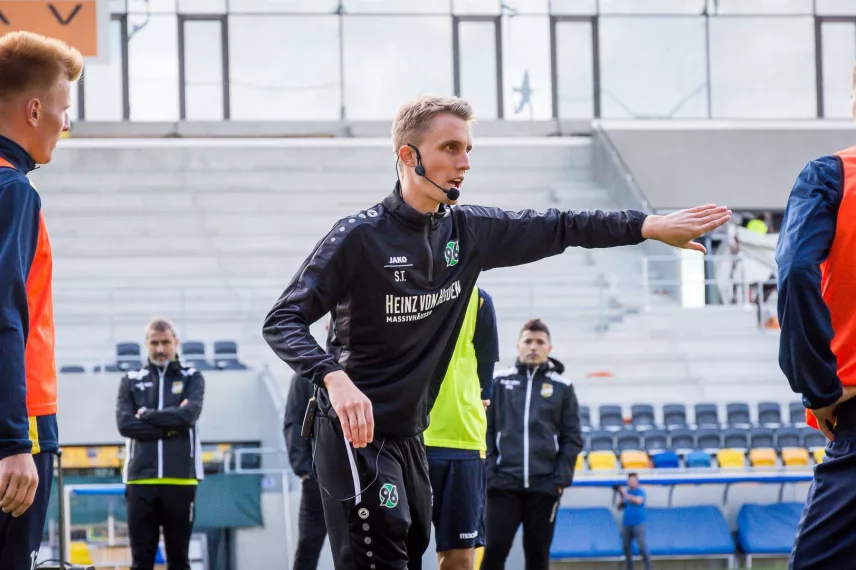
In this illuminating conversation, we have the privilege of chatting with Carsten Effertz, a highly regarded speed coach associated with the Tanner Speed Academy. Our discussion delves deep into the nuances of speed training specifically tailored for soccer. Carsten sheds light on the pivotal significance of speed in contemporary soccer and dispels prevalent myths surrounding this essential aspect.
Furthermore, he provides insights into the fundamental elements of successful speed training, delving into the influence of genetics and tracing the evolution of speed within the sport throughout the years. Join us on this captivating journey as we explore these intriguing facets alongside one of the foremost authorities in the realm of soccer speed coaching.
SC: How does one become a speed coach?
CE: Unlike professions like soccer coaching, there isn’t a formal education system for speed coaching. You can’t obtain a UEFA or FIFA license specifically for speed coaching. In my situation, expertise comes from years of hands-on training experience. For instance, Hans Tanner, the founder of Tanner Speed, previously served as the national coach for Swiss high jumpers before transitioning to become a speed coach for the FC Zurich soccer academy. In my own journey, I played football at the academy level while simultaneously engaging in high jump competitions during my teenage years. This dual experience fueled my passion for this type of training.
…if you’re 0.1 seconds faster than your opponent in a 10-meter sprint, you’ll be about 58 centimeters ahead. This can be the difference between taking a shot on goal or making a successful tackle.Carsten Effertz
SC: Why is speed training so important for soccer players?
CE: In the contemporary game of soccer, every action demanded of players requires speed. Every motion is constrained by time pressure, extending beyond mere physical speed to encompass quick thinking and decisive decision-making. Through targeted training sessions, we can enhance these cognitive aspects, ensuring players are well-prepared for the dynamics of the game. To illustrate, a marginal 0.1-second advantage in a 10-meter sprint equates to approximately 58 centimeters ahead of your opponent. This seemingly small difference can be decisive, determining whether you successfully take a shot on goal or make a crucial tackle.
SC: What are common misconceptions about speed training in soccer?
CE: There’s a prevalent misunderstanding that speed is an inherent trait—you either have it or you don’t. However, running is a skill, much like passing the ball. Not everyone may match Mbappe’s speed, but by refining running and movement techniques, individuals can unlock their full personal potential. This refinement is the key factor.
SC: What are the key components of speed training for soccer players?
CE: The essential components here are frequency (or cadence) and reactive strength, both reliant on good coordination. It’s crucial to effectively utilize muscle-tendon elasticity. Achieving this hinges on our muscular system being well-prepared to activate as swiftly as possible.
SC: Meaning for a soccer player, high frequency movements are better?
CE: Certainly, let’s take Usain Bolt as a straightforward example. As you may recall, Bolt attempted a transition to soccer but fell short of reaching the highest echelons. Surprisingly, one of the reasons behind this was his perceived lack of speed. It might seem counterintuitive to label the fastest man on earth as too slow for soccer, but the distinction lies in the movement patterns. A 100-meter runner, like Bolt, employs entirely different steps compared to a soccer player. Soccer involves rapid changes of direction with short sprints, whereas a 100-meter runner covers a considerable distance with just a few steps. This underscores the significance of training for frequency.
…running is a skill. Like passing the ball is a skill. Not everyone is able to run as fast as Mbappe. But with a better running and moving technique you can use your full personal potential.Carsten Effertz
SC: Do genetics play a big part or am I actually able to become faster?
CE: As previously highlighted, while it is a crucial aspect, it is not the sole determinant. Possessing favorable genetics for fast muscles can enhance performance, but this advantage is fully realized when coupled with effective coordination and running technique. Without these elements, there’s a heightened risk of injuries as the body may not be adequately prepared to withstand the stresses associated with high-speed activities.
SC: Speaking of key components, what are typical mistakes you see all the time when training with players?
CE: A prevalent issue among players is the tendency to land on their heels. An observation of elite players such as Mbappe or Vinicius Jr. reveals that they avoid touching the ground with their heels. The ability to land on the front part of the foot is crucial for generating the power necessary to propel the body forward.
SC: How do you measure progress in an athlete’s speed and speed endurance?
CE: Within our academy, we gauge the advancement of our athletes through various assessments, encompassing linear sprinting and change of direction tests. Leveraging our Speed Court system, we evaluate players’ agility, scrutinizing their prompt response to signals. The insights garnered from these tests inform the customization of individualized training programs for the athletes. This is complemented by periodic testing phases to evaluate the efficacy of the prescribed training regimen in achieving the intended outcomes.
SC: How has speed in soccer evolved over the years?
CE: The speed dynamics in soccer have notably escalated in recent years. As the level of play elevates, the pace of the game intensifies. A glance at prominent leagues such as the Premier League or events like the FIFA World Cup reveals a surge in statistics depicting players engaging in more high-speed running. Consider a player like Bellingham, who, in a single game, executed up to 87 sprints. This translates to essentially performing a full-speed sprint nearly every minute.
SC: What advice would you give to young soccer players aspiring to improve their speed and athleticism?
CE: For young players, my primary recommendation is to prioritize coordination over strength. A solid foundation in coordination facilitates quicker movements. Subsequently, we need to build strength in our feet, and training without shoes can be beneficial in this regard. Engaging in coordination and speed exercises without footwear enhances the development of muscles in the feet.







